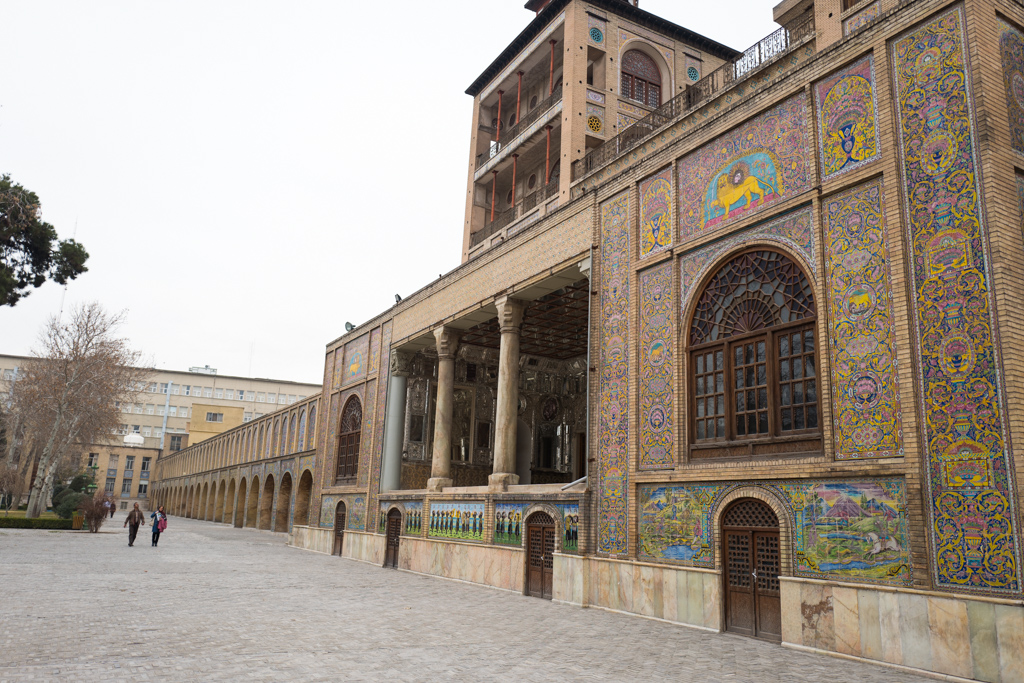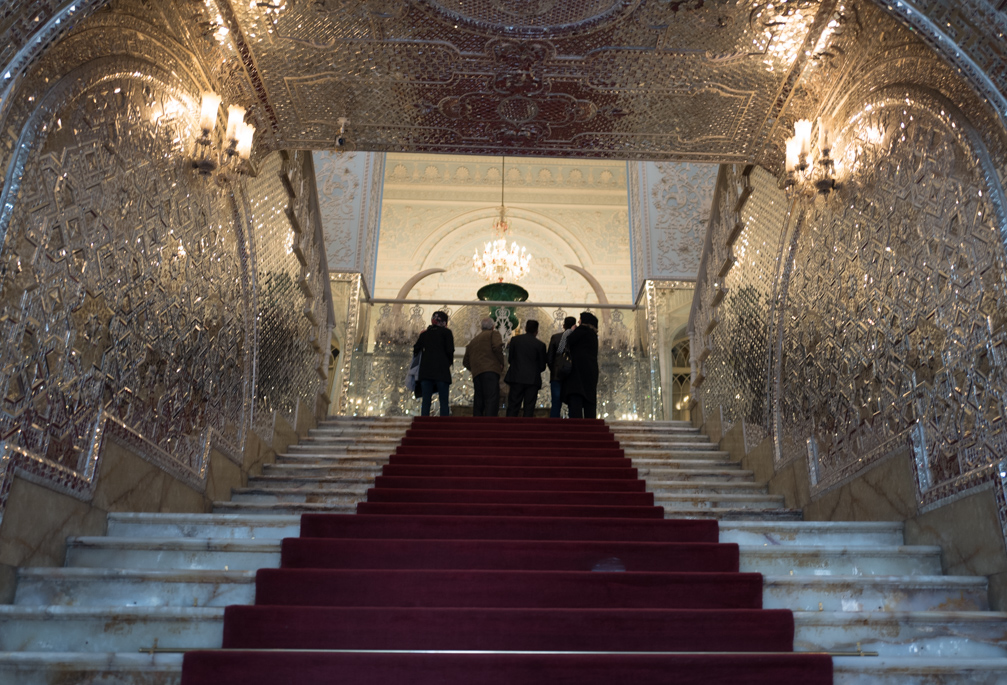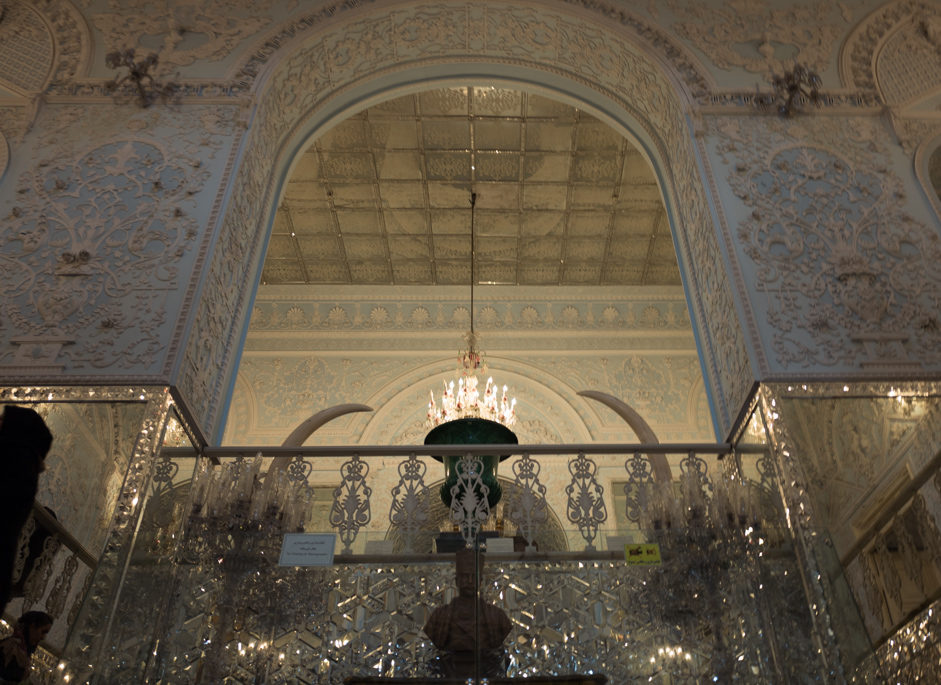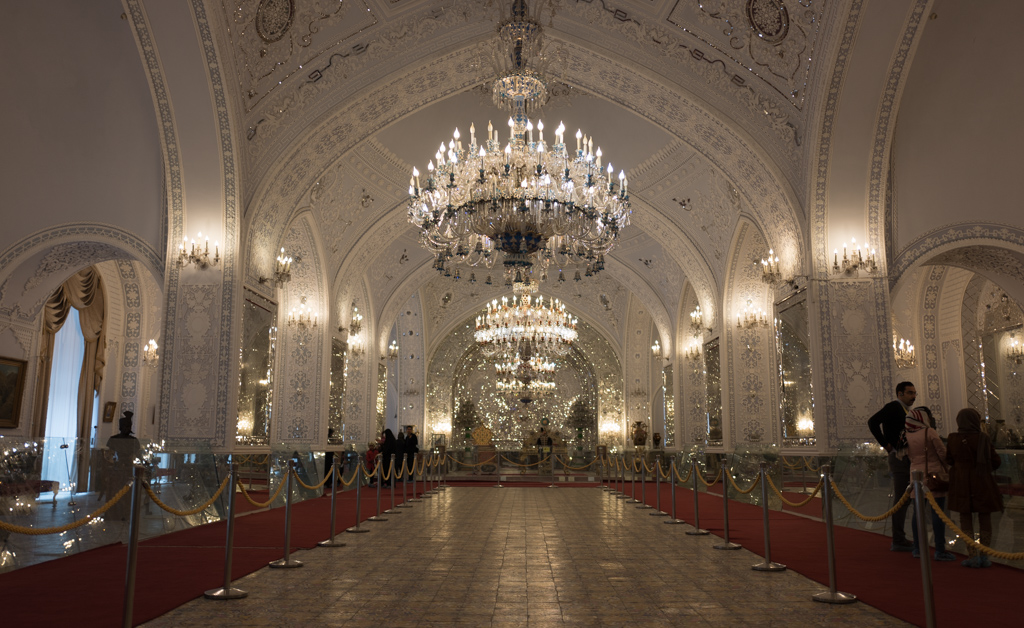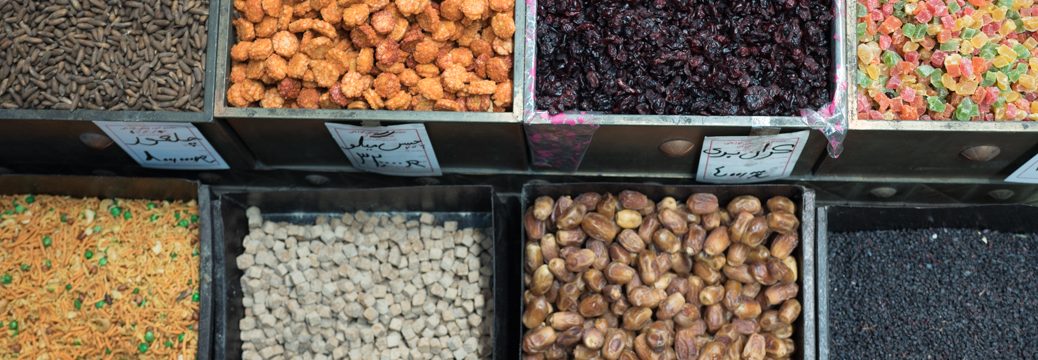It’s “sunday” in Tehran, actually friday Jan-8. I got to the hotel around 3am and after a short night and breakfast in Espinas hotel, I started to explore downtown. Tehran is the capital of Iran. It’s elevation is 1189m and it has 9mio inhabitants, the wider region 16mio! Here’s some pictures of places in walking distance to the hotel:
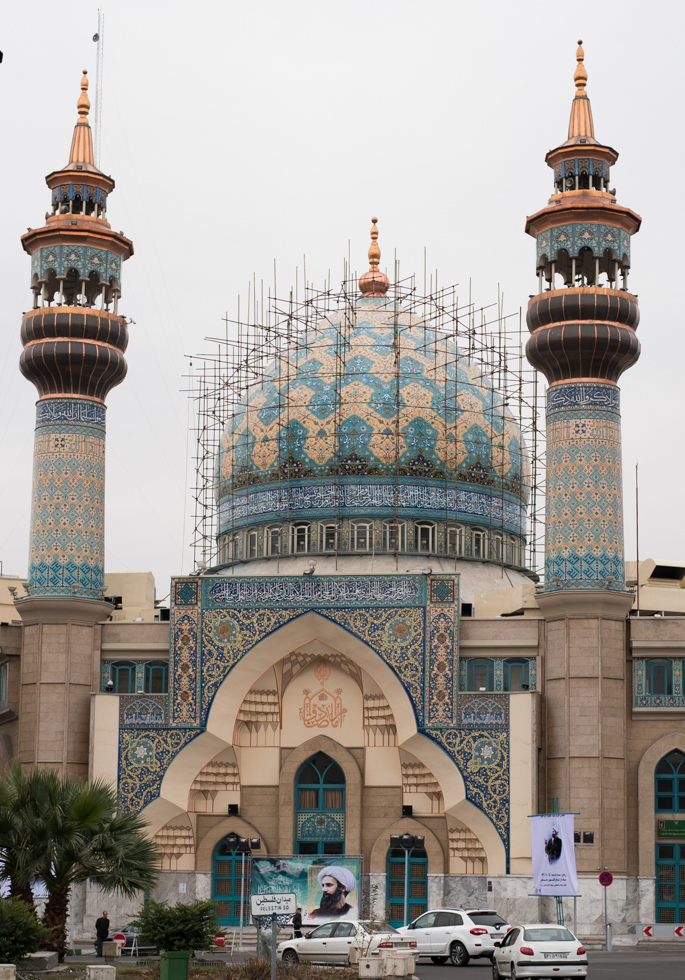
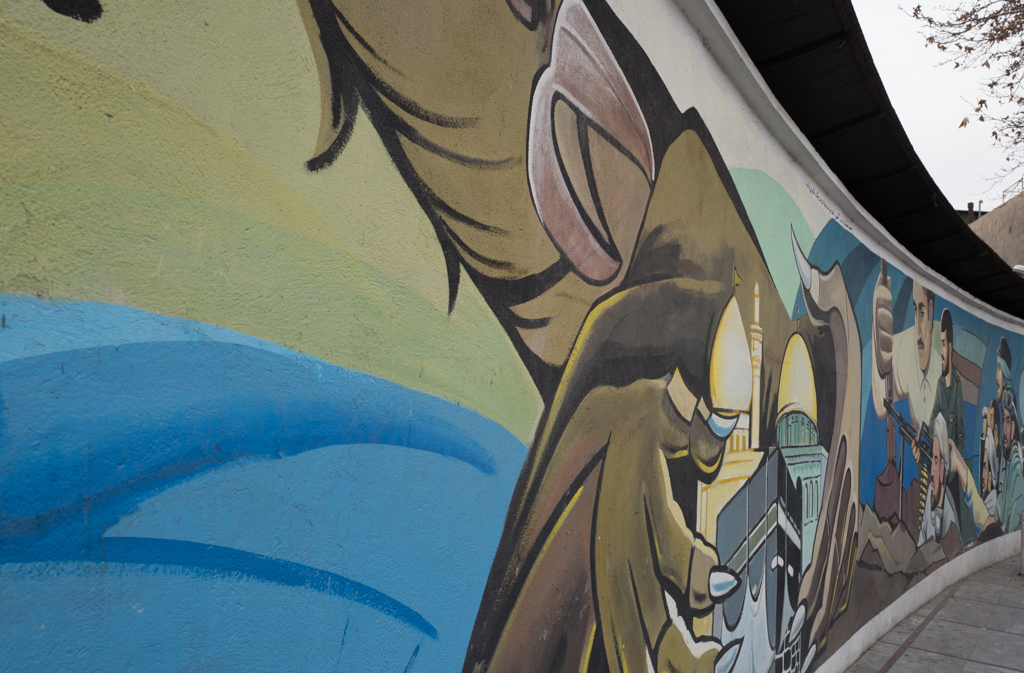
Going through the streets, the impression I got was that most of the buildings have a rather grey look (probably even more due to the rather grey weather), requiring maintenance and some have obviously even been abandoned.
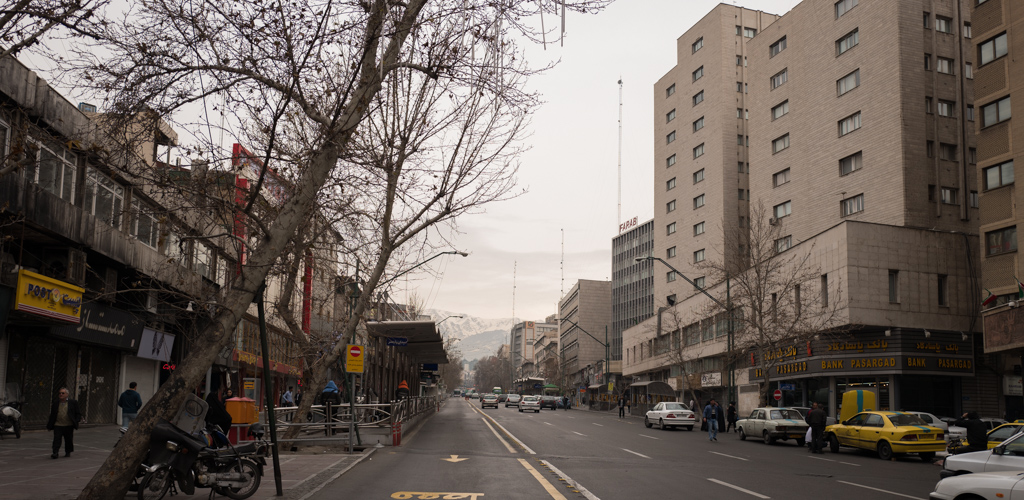
However, beside the mosques there are many colourful spots like this back-entrance to a shopping-mall:
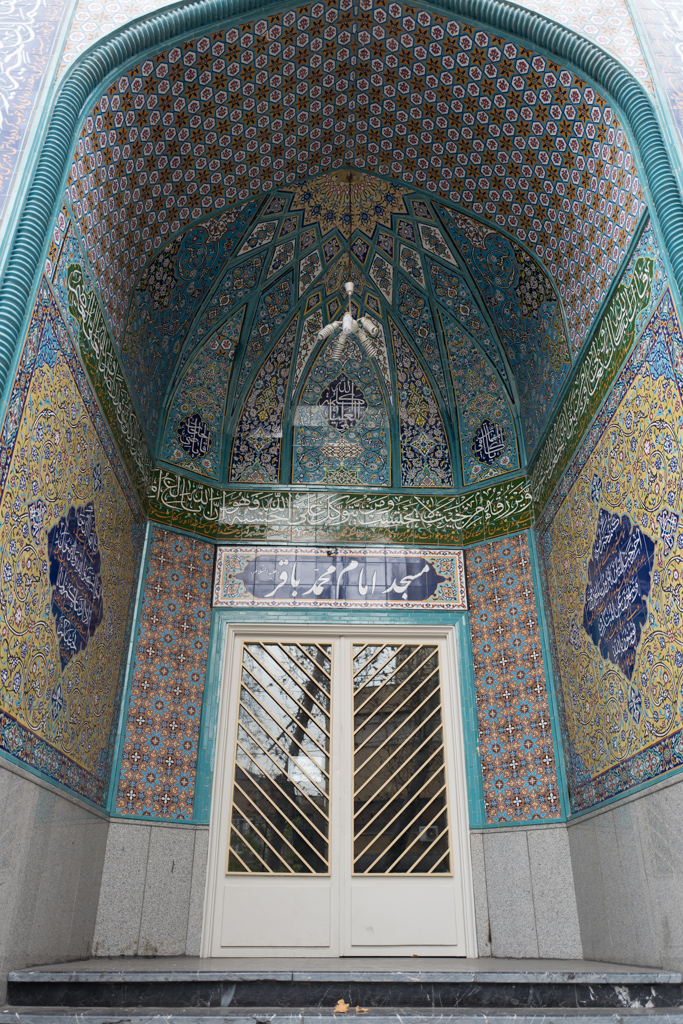
And here’s the paradise for everybody having a sweet tooth: a store full of cookies, sweets, dried fruit and nuts:
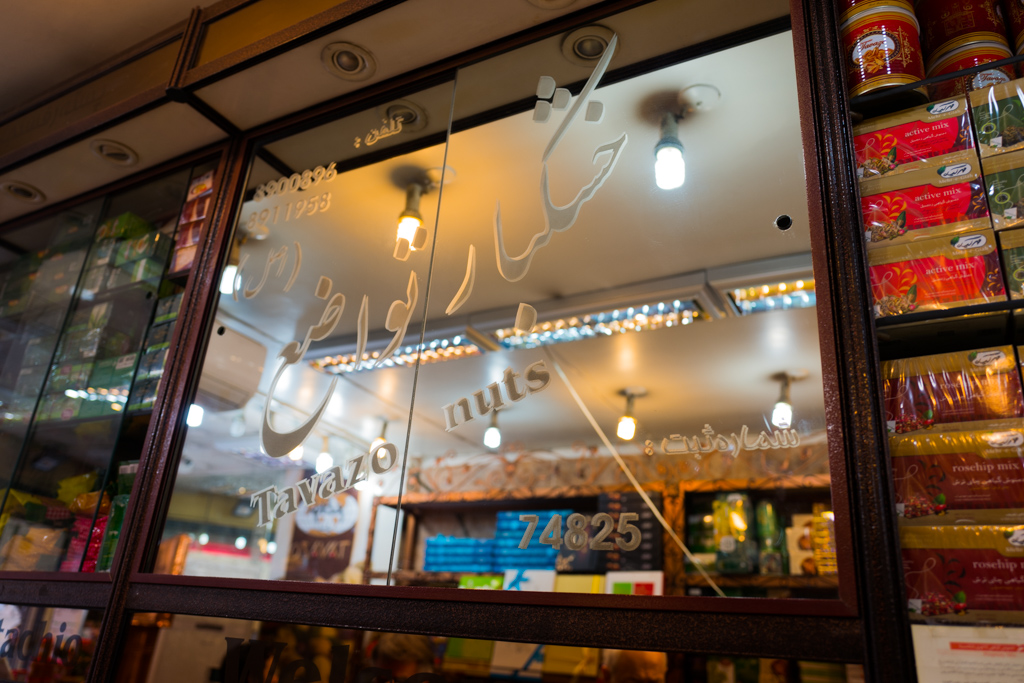
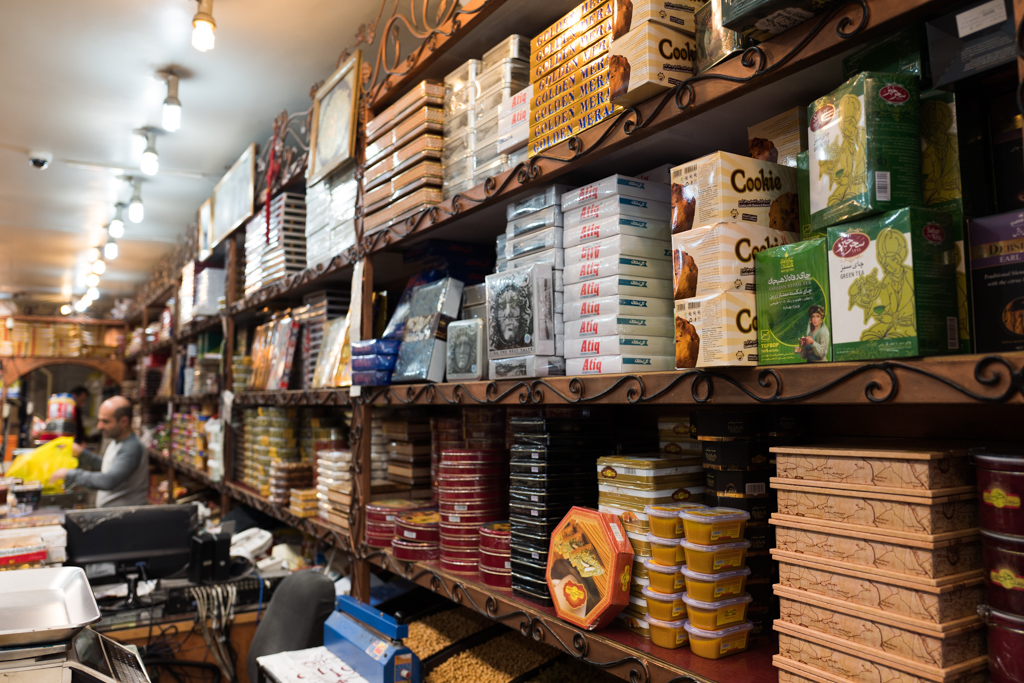
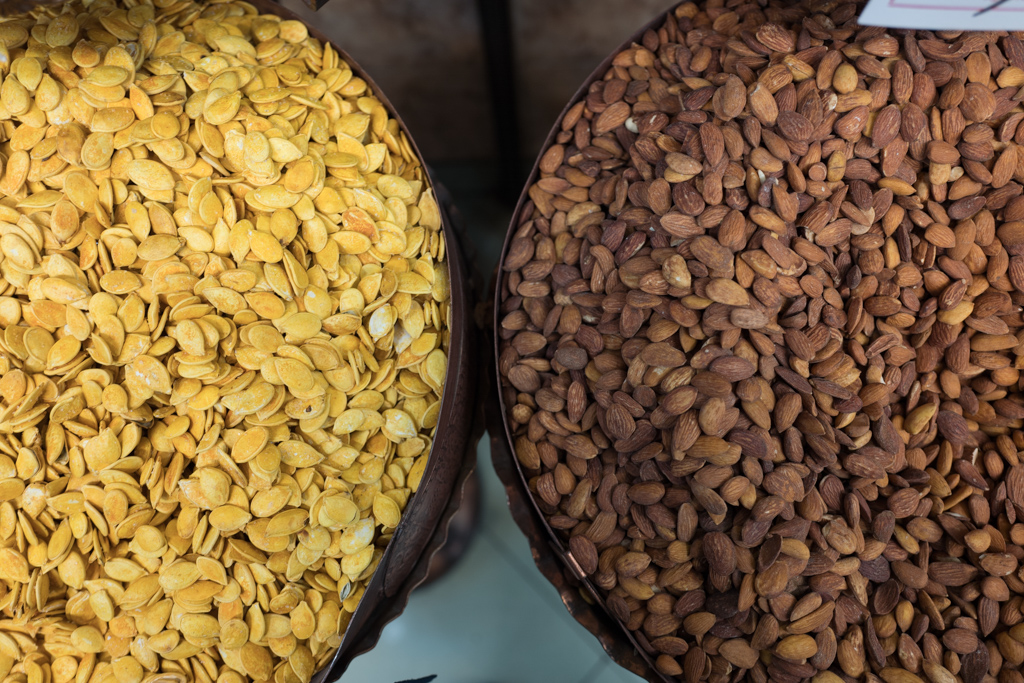
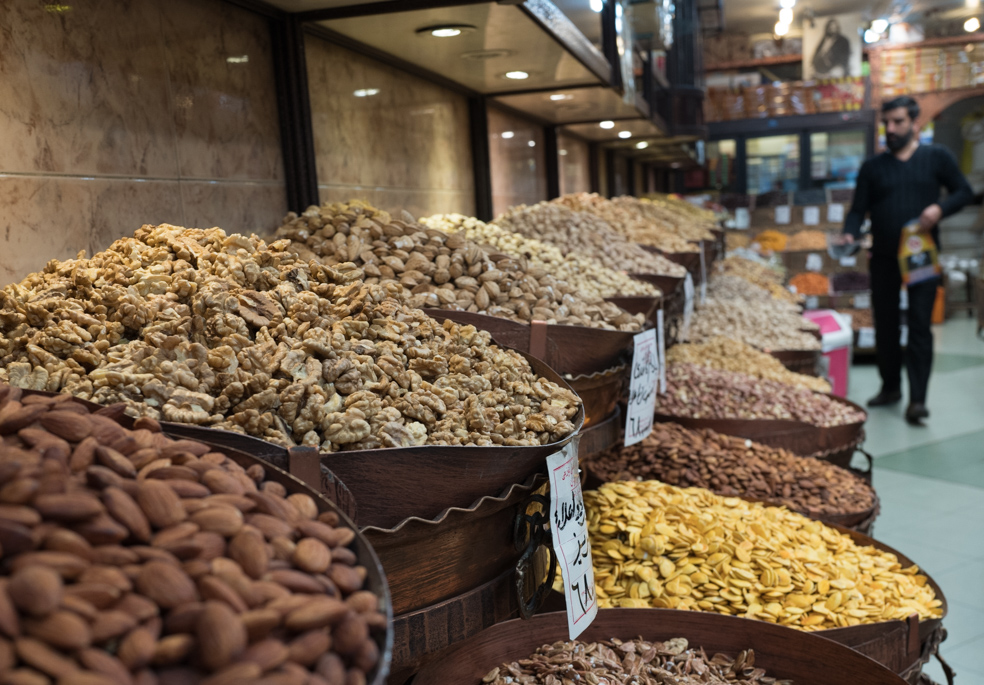
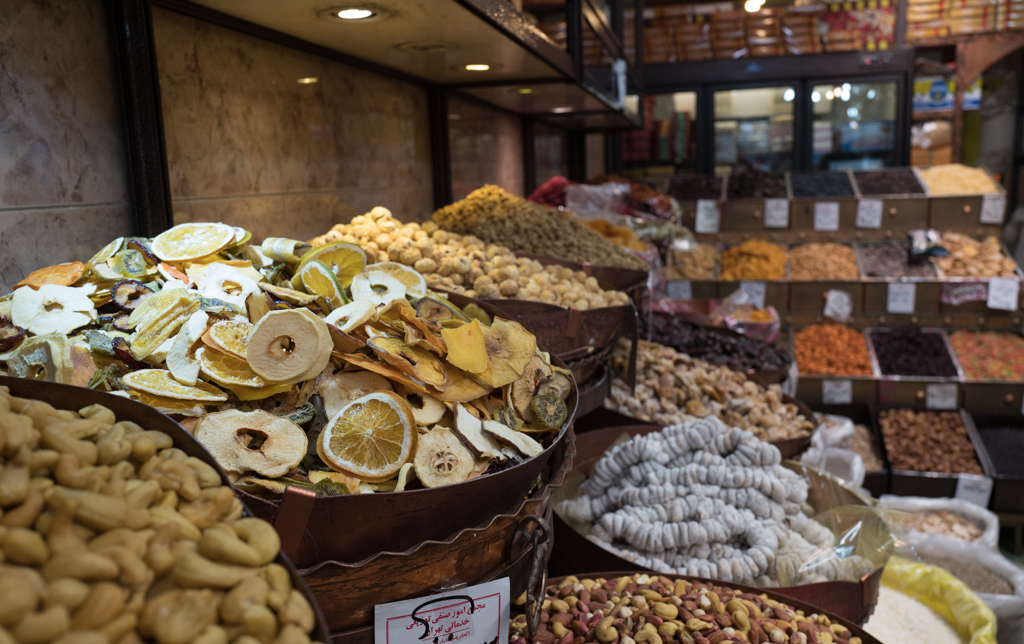
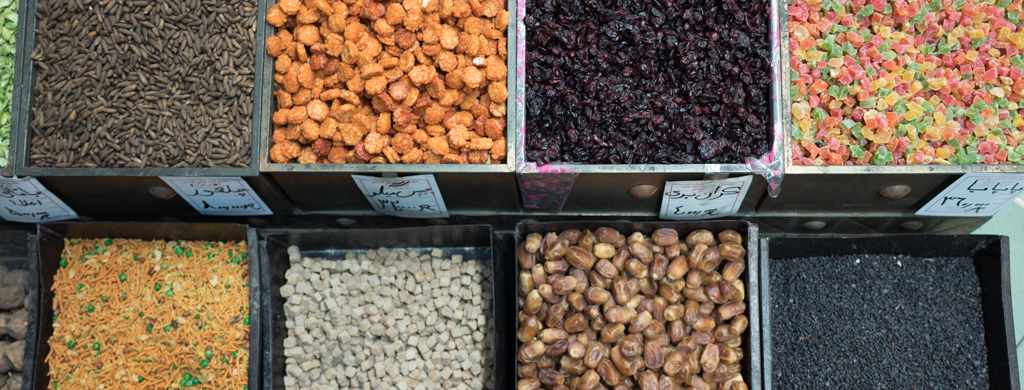
A taxi brought me to Golestan Palace (palace of flowers), the oldest historic monument in Tehran, the construction of the oldest buildings started in the 16th century as part of the former citadel. Since then it has continuosly been extended and renovated by the various emperors who used the buildings as their residence and for represenational purposes. This history ended with the disposal of Schah Reza Pahlavi in 1979. Nowadays the palace is mostly used as a museum.
The first thing you see inside the palace are the walls that are beautifully decorated with tiles. Each arc is differently styled:
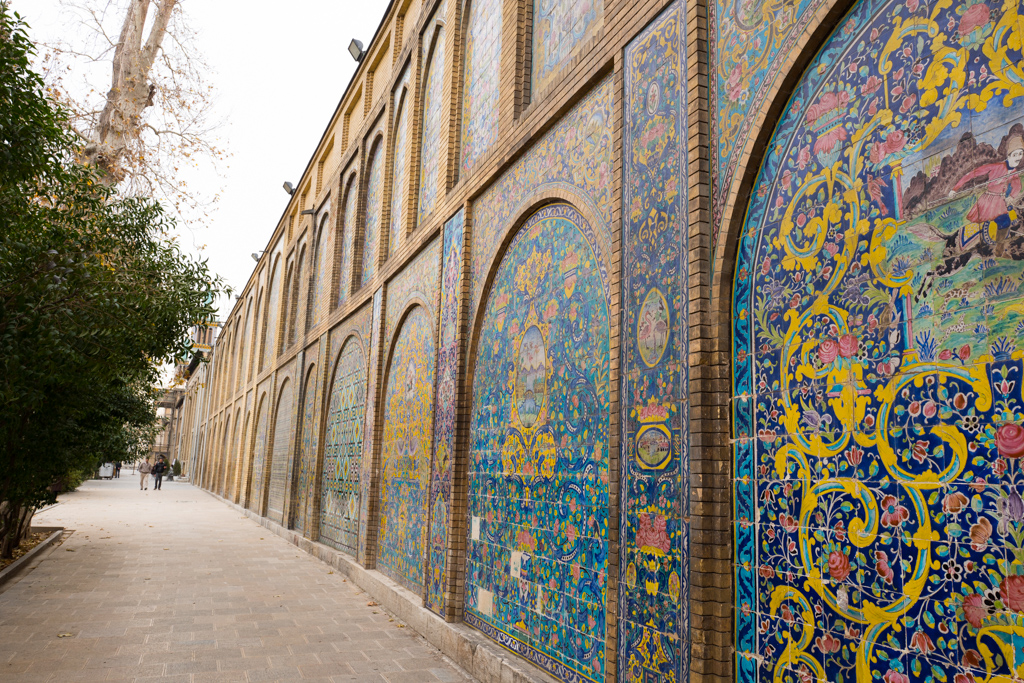
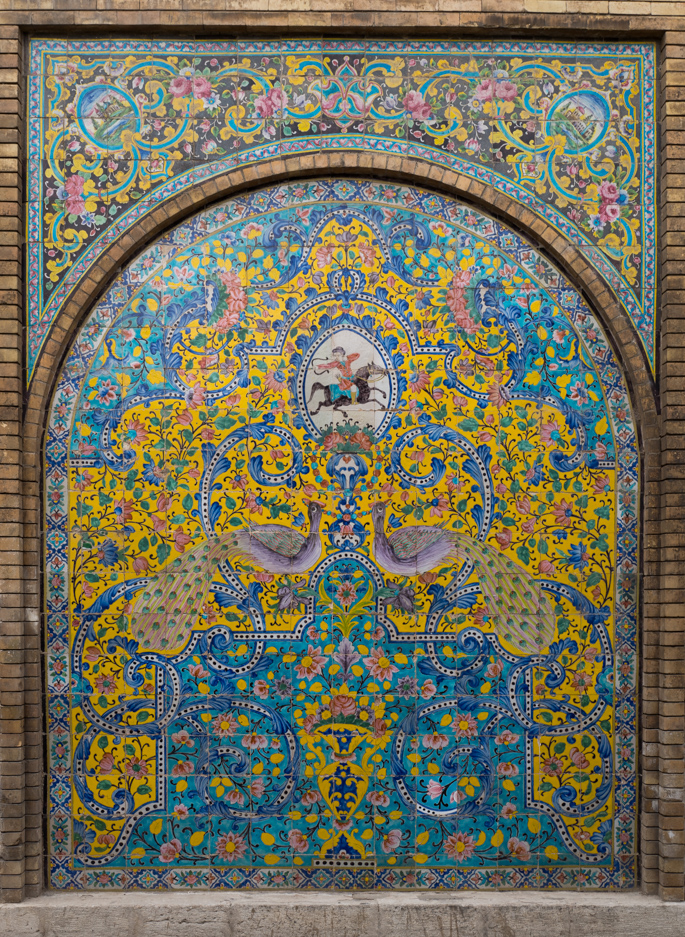
There are many buildings in the area of the palace and you have to buy tickets separately for each one at the entrance.
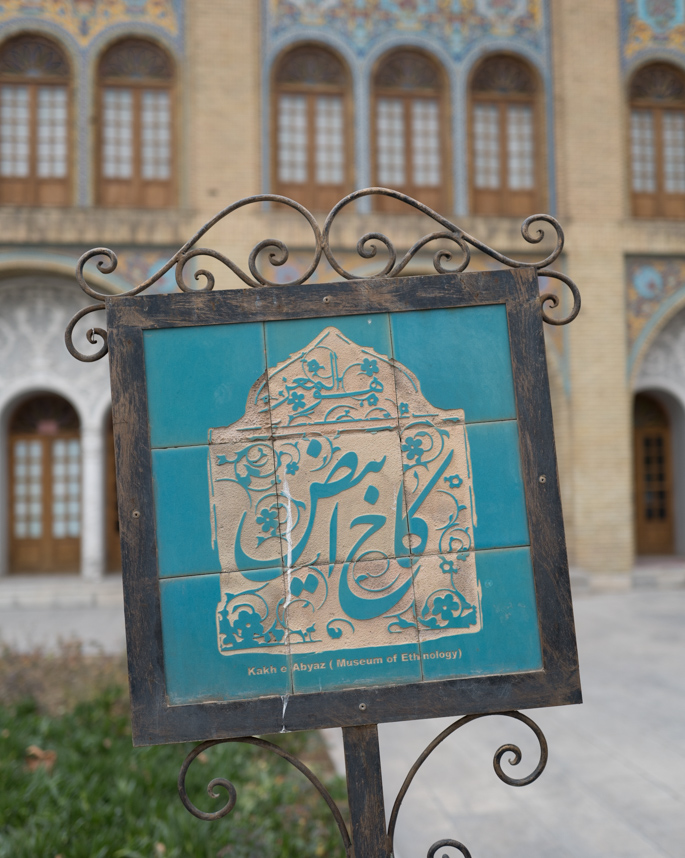
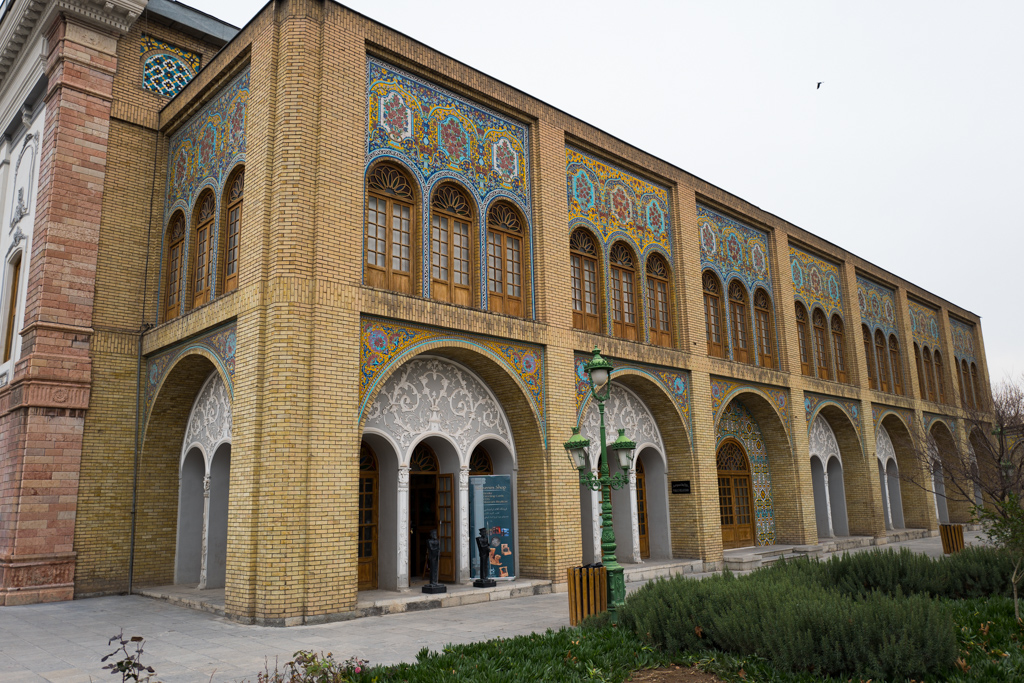
I didn’t visit the ethnological museum though. The first building I entered was the Emarat-e Badgir, the “Building of the wind towers”. It has been constructed in the early 19th century and has 4 towers that were constructed to provide cooling for the main building:
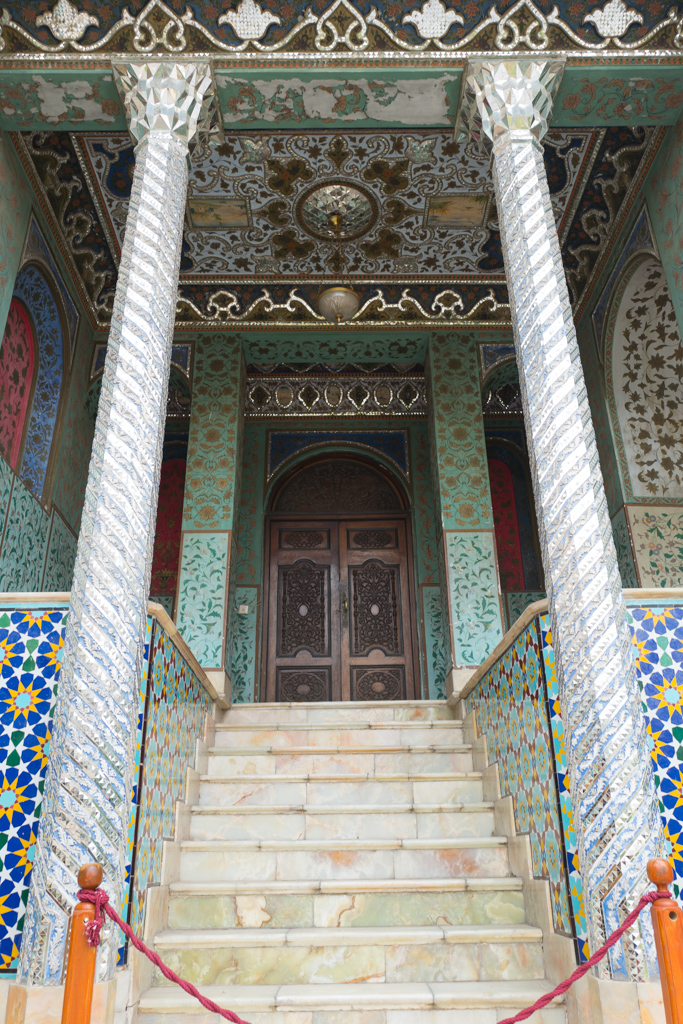
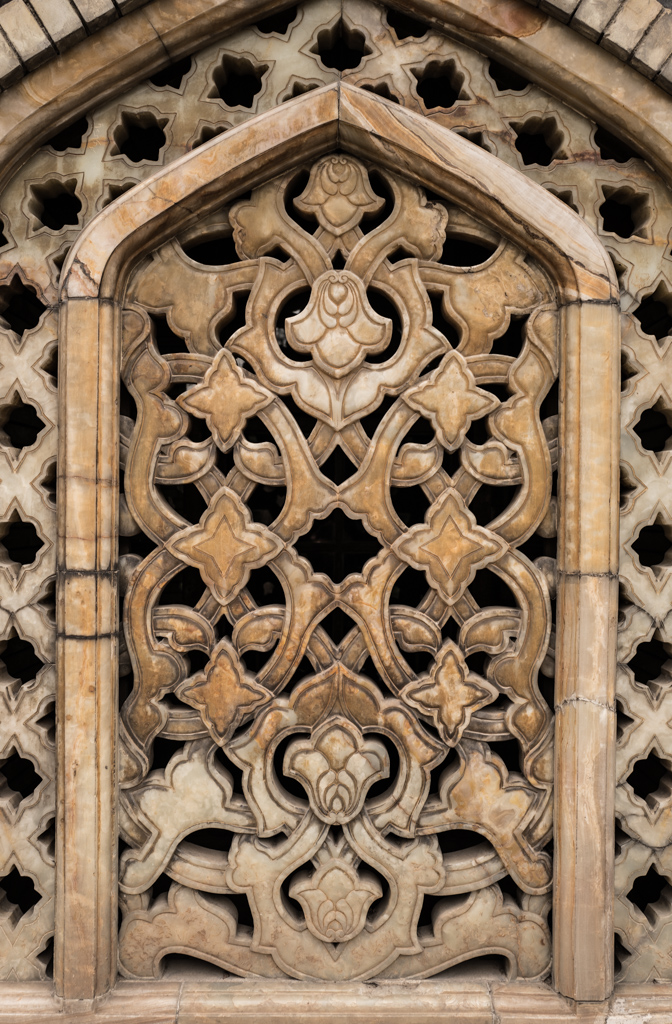
While the building looks nice from the outside, the interior is stunning:
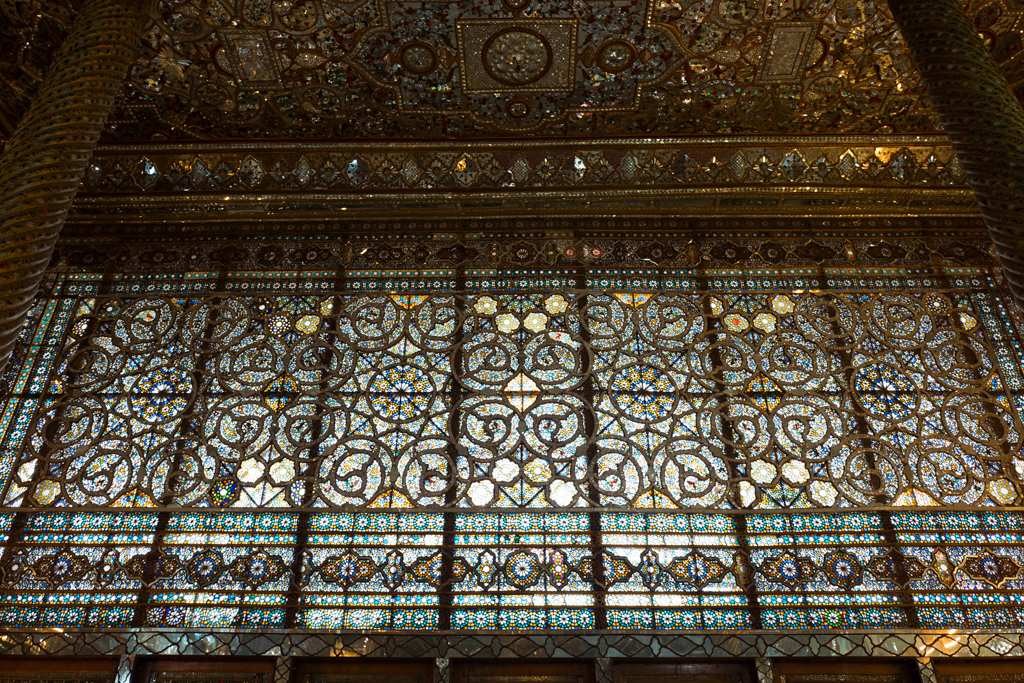
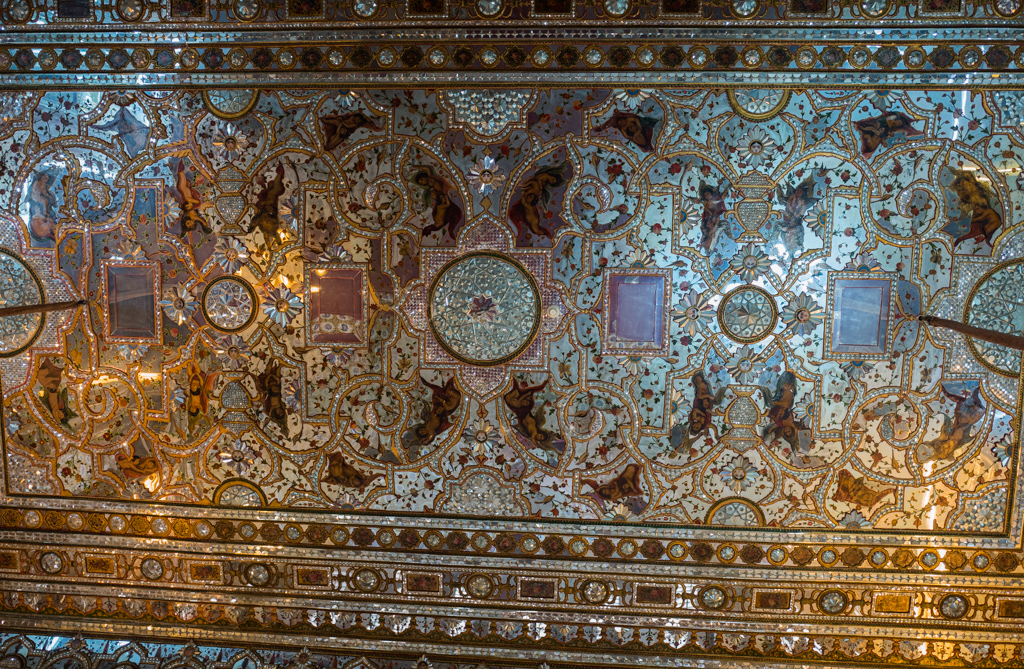
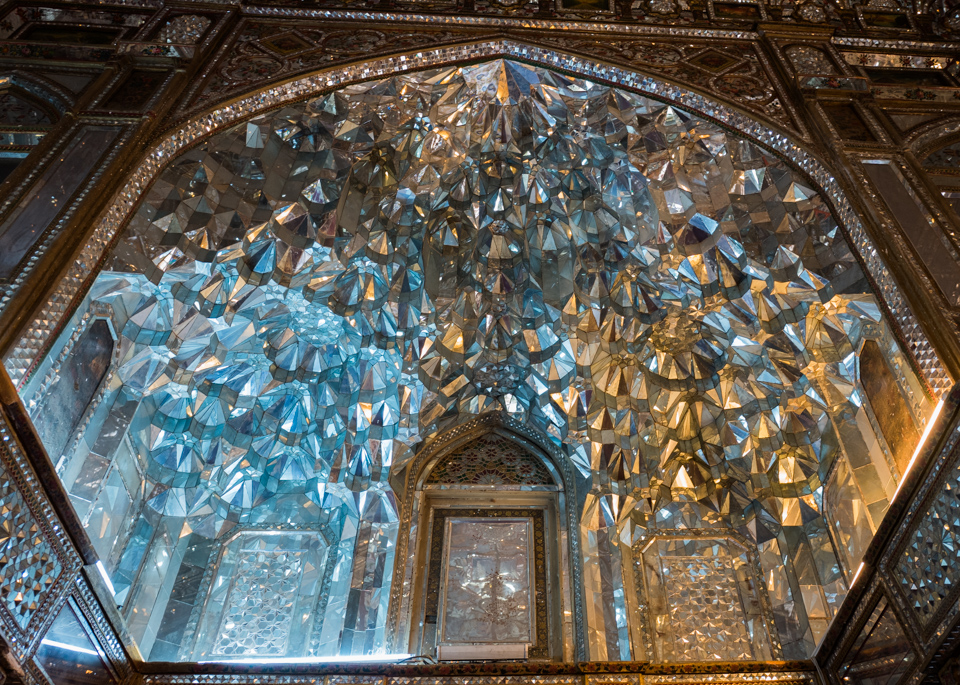
Looking back at two of the four wind towers while going to the next building:
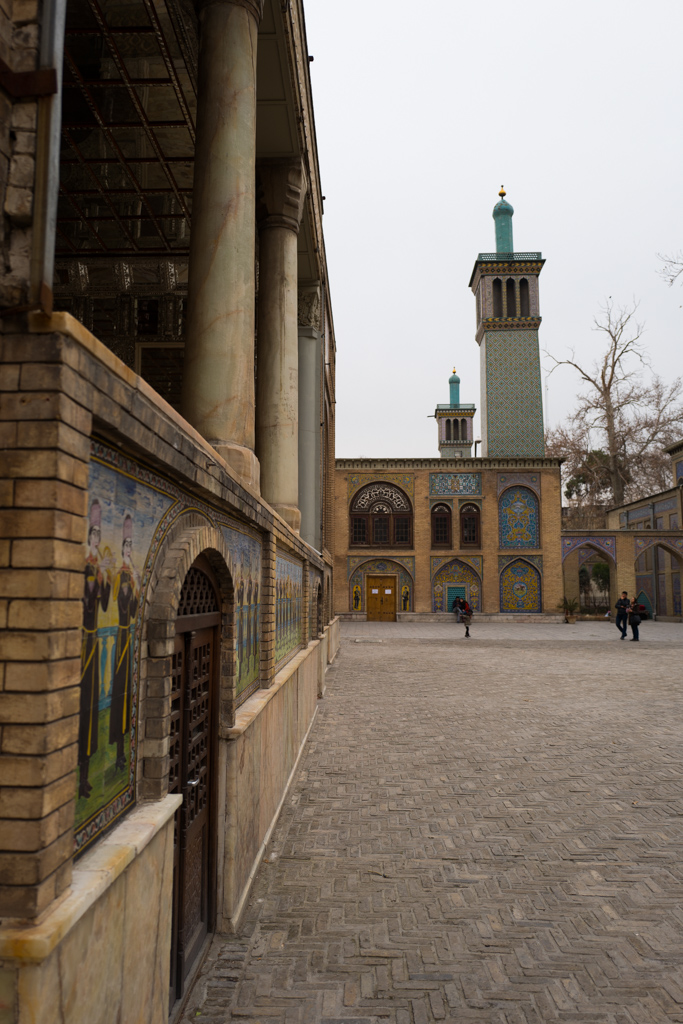
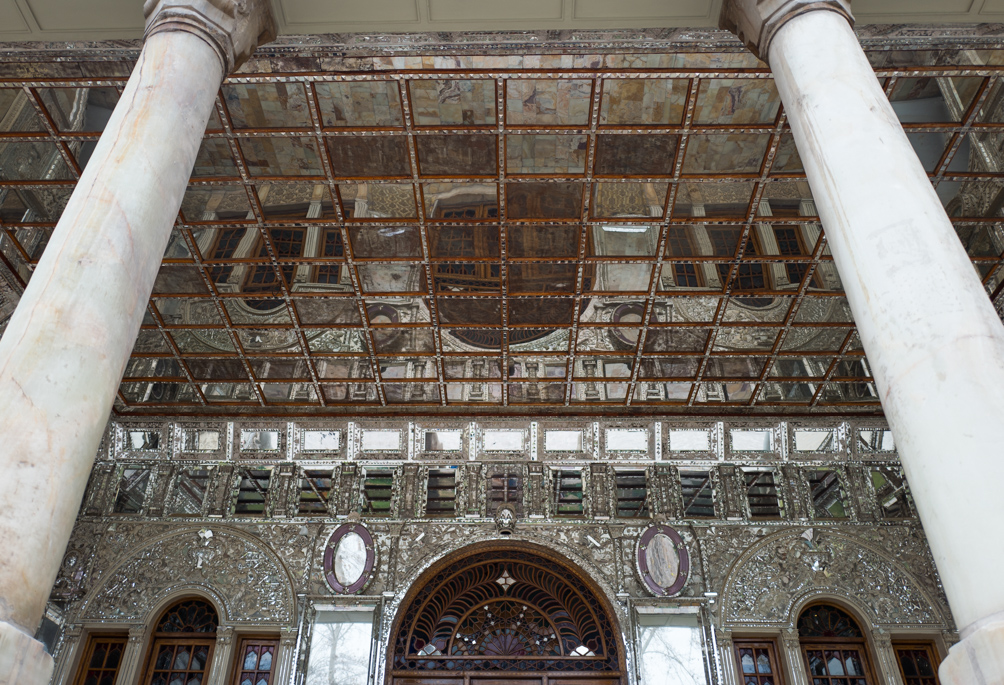
Finally moving to the last building that used to be the residence and reception building of Iran’s former emperors:
